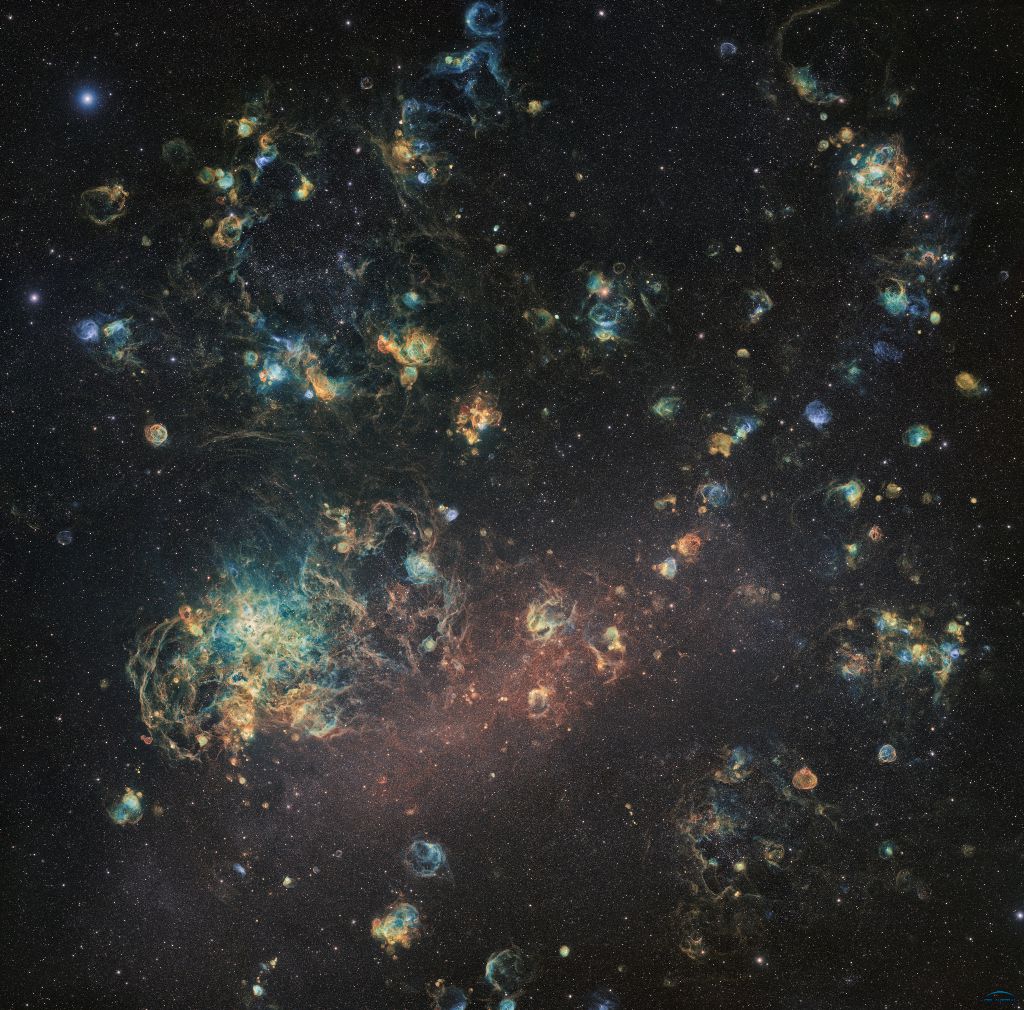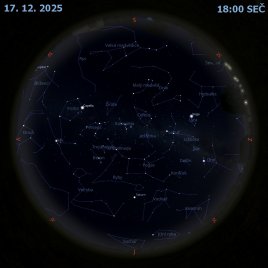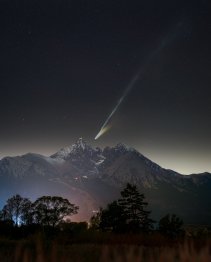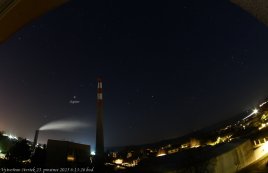Mračna ve Velkém Magellanově mračnu

Uznání a
copyright:
Team Ciel Austral -
J. C. Canonne, N. Outters, P. Bernhard, D. Chaplain, L. Bourgon
Na
Velké Magellanovo mračno
(LMC) je na jižní obloze pěkný pohled.
Ale tento hloubkový a podrobný teleskopický pohled vytváření více než 10 měsíců jde dále,
než co je viditelné většině
navigátorů
při plavbě kolem zeměkoule.
Mozaika s panely 4x4 zabírá něco přes 5 stupňů, neboli 10 úplňků a vznikla z 3900 snímků s celkovým expozičním časem 1060 hodin přes širokopásmové a úzkopásmové filtry.
Úzkopásmové filtry propouštěly pouze světlo emitované atomy síry, vodíku a kyslíku.
Atomy jsou ionizovány energetickým světlem hvězd a při rekombinaci s elektrony vyzařují své charakteristické světlo při přechodu na nižší energetický stav.
Výsledkem je, že se samotné LMC zdá být pokryto svými vlastními mračny
ionizovaného plynu
kolem
hmotných mladých hvězd.
Zářícím mračnům, které opracovávají silné hvězdné větry a ultrafialové záření, dominuje emise vodíku v místech známých jako
H II
oblasti (ionizovaného vodíku).
Vlevo je velká hvězdotvorná oblast,
mlhovina Tarantule,
která je sama tvořena překrývajícími se H-II oblastmi.
LMC je největší satelitní galaxií naší Mléčné dráhy, měří asi 15 000 světelných let a nachází se asi 160 000 světelných let daleko v jižním souhvězdí Mečouna
(Dorado).
Poznámka překladatele: Francouzský tým využívá též kamery G4-16000 od Moravských přístrojů.
Seznam odkazů v popisu
- SEDS.org: The Large Magellanic Cloud, LMC
- CielAustral.com: Le Grand Nuage de Magellan
- APOD: 2015-08-27 Velké Magellanovo mračno
- APOD: 2005-12-23 Vodík a prach v Růžicové mlhovině
- NASA: Massive Young Stars Trigger Stellar Birth
- Wikipedia: H_II_region
- APOD: 2006-01-06 Mlhovina Tarantule
NASA Official: Phillip Newman Specific rights apply. NASA Web Privacy Policy and Important Notices
A service of: ASD at NASA / GSFC & Michigan Tech. U.
Odkaz na originální APOD


